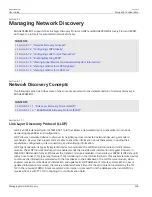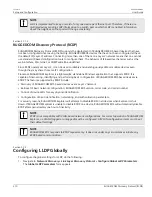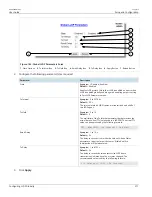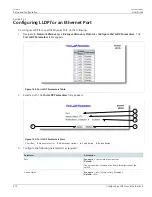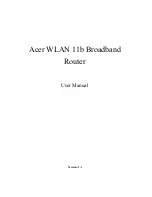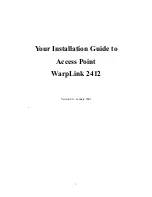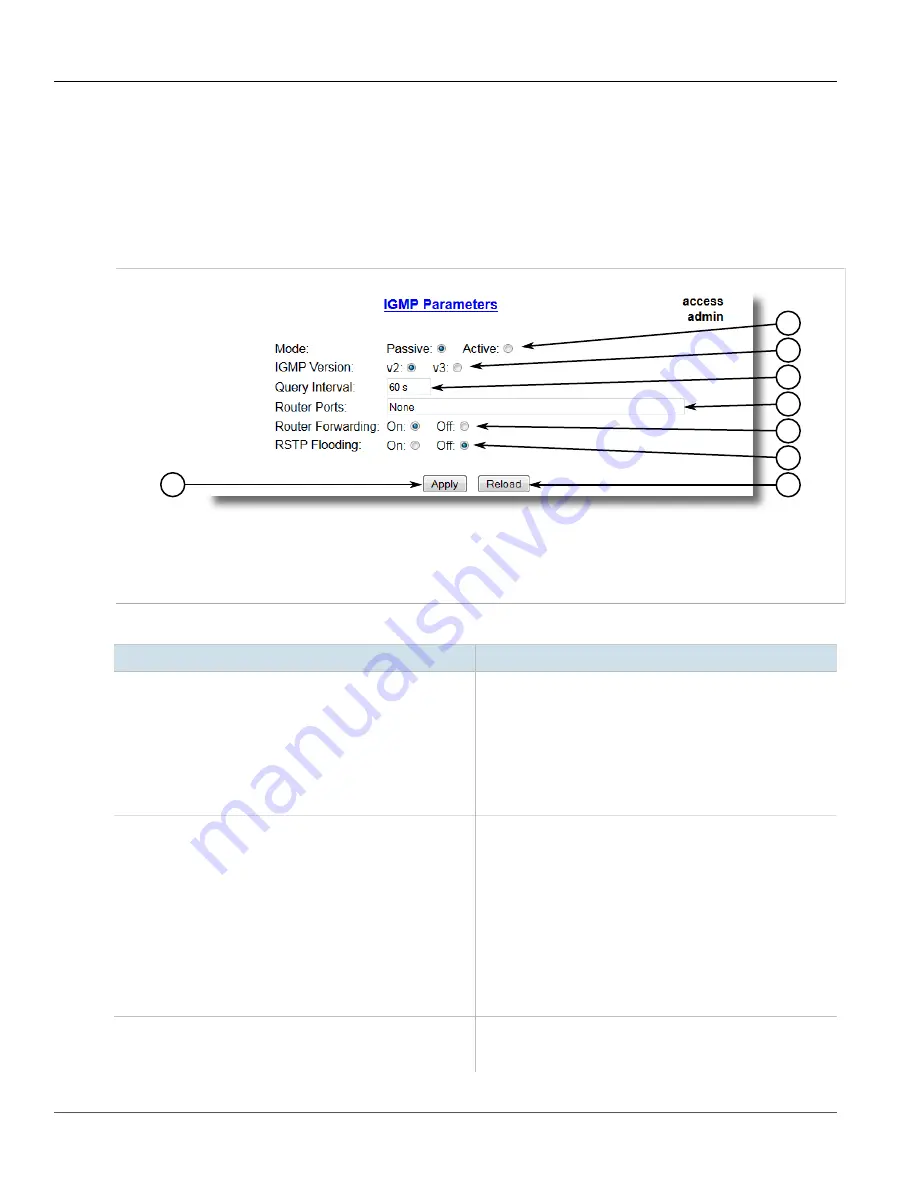
RUGGEDCOM ROS
User Guide
Chapter 5
Setup and Configuration
Configuring IGMP
223
Section 5.8.1.4
Configuring IGMP
To configure the IGMP, do the following:
1. Make sure one or more static VLANs exist with IGMP enabled. For more information, refer to
.
2. Navigate to
Multicast Filtering
»
Configure IGMP Parameters
. The
IGMP Parameters
form appears.
7
8
6
5
4
3
2
1
Figure 154: IGMP Parameters Form
1.
Mode Options
2.
IGMP Version
3.
Query Interval Box
4.
Router Ports Box
5.
Router Forwarding Options
6.
RSTP Flooding
Options
7.
Apply Button
8.
Reload Button
3. Configure the following parameter(s) as required:
Parameter
Description
Mode
Synopsis:
{ Passive, Active }
Default:
Passive
Specifies the IGMP mode. Options include:
•
PASSIVE
– the switch passively snoops IGMP traffic and never
sends IGMP queries
•
ACTIVE
– the switch generates IGMP queries, if no queries
from a better candidate for being the querier are detected for a
while.
IGMP Version
Synopsis:
{ v2, v3 }
Default:
v2
Specifies the configured IGMP version on the switch. Options
include:
•
v2
– Sets the IGMP version to version 2. When selected for a
snooping switch, all IGMP reports and queries greater than v2
are forwarded, but not added to the IGMP Multicast Forwarding
table.
•
v3
– Sets the IGMP version to version 3. General queries are
generated in IGMPv3 format, all versions of IGMP messages
are processed by the switch, and traffic is pruned based on
multicast group address only.
Query Interval
Synopsis:
10 to 3600
Default:
60 s
The time interval between IGMP queries generated by the switch.

